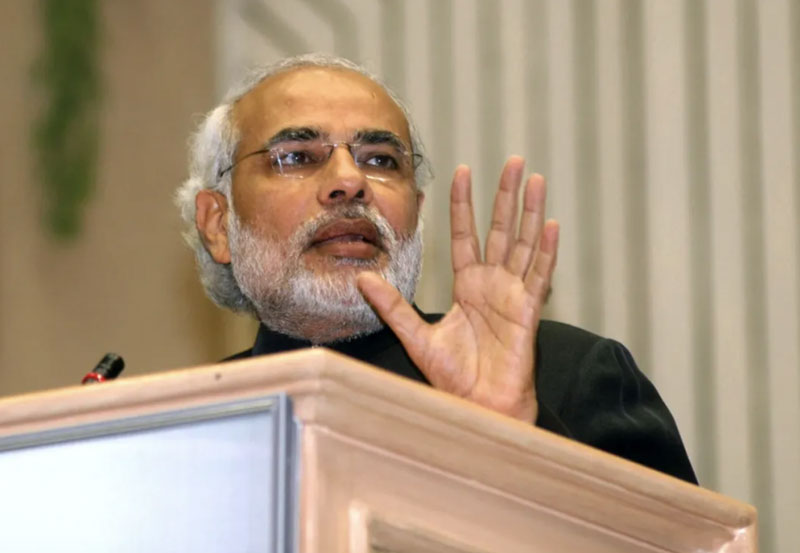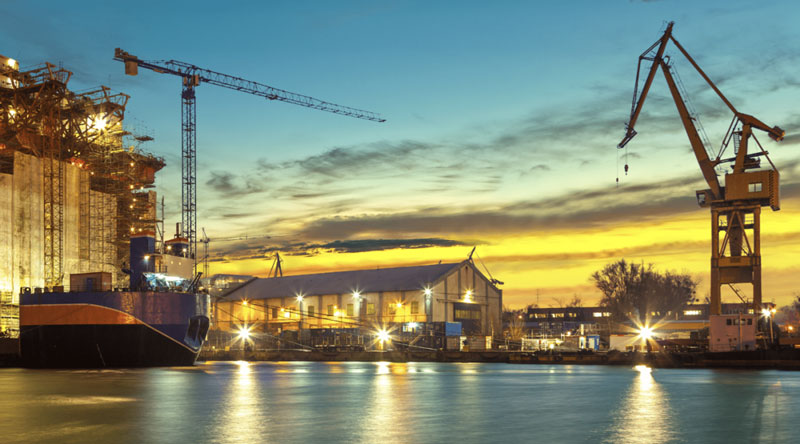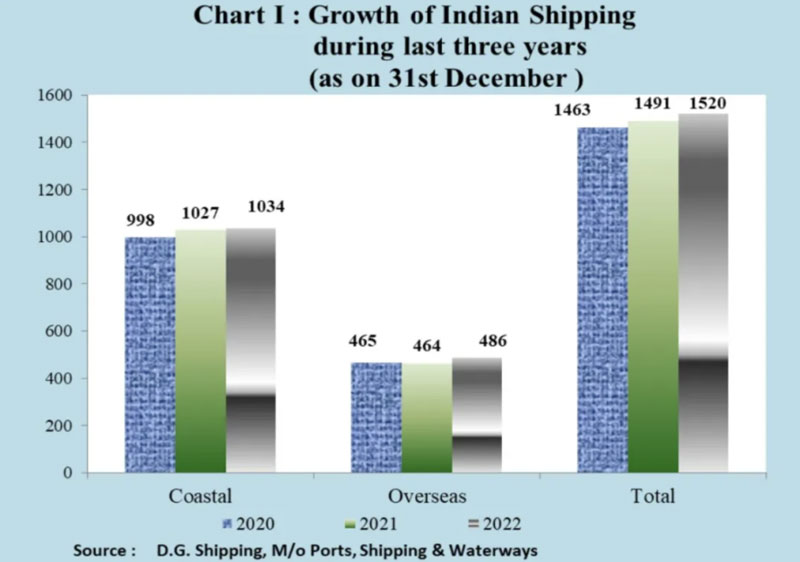

India's national shipping company SCI and oil company IOCL will collaborate to build the VLCC
India is making ambitious forays into the market for the construction of very large oil tankers (VLCC) after announcing plans to form a new national shipping line in the next decade.
According to sources familiar with the matter, India's Shipping Ministry has proposed a plan for the VLCC to be built by the National Shipping Corporation of India (SCI) in partnership with the Indian Oil Corporation (IOCL). As India's largest oil marketing company and refiner, Indian Oil Corporation is seen as the preferred entity for a joint venture with the National Shipping Corporation of India. The plan is currently being reviewed by stakeholders, including the Ministry of Oil and Gas. However, the plan is still in the early stages, and it will take time to materialize, and India's infrastructure development is also an urgent problem.
Currently, India's share of the global shipbuilding market is less than 1%, which is dominated by China, South Korea and Japan. The bold move to jointly build the VLCC is in line with the Indian government's Atmanirbhar Bharat agenda, which aims to boost India's manufacturing prowess, ensure the country's energy security through indigenous technology, and reduce its dependence on foreign vessels and insurance companies. And reduce the risk of operational disruption during emergencies such as war.
India is the world's third-largest importer of crude oil after the United States and China. Supply concerns resulting from current global wars and conflicts, as well as frequent volatility in the energy market, add to the urgency of building tankers. A number of global shipping attacks in the Strait of Hormuz and the Red Sea region have also highlighted the need for a homegrown fleet operated and insured by Indian companies. In addition, Western sanctions on ships carrying Russian oil have further highlighted the importance of India having an autonomous fleet. In recent years, Russia has become India's largest oil supplier, accounting for 35 percent of its imports.
However, Indian shipyards are facing challenges from the global market downturn and protectionist measures. The document mentioned that in the early 2000s, the Indian shipbuilding industry produced more than 300,000 gross tons (GT) of vessels, ranking among the top 10 in the world. But the downturn in the global shipbuilding industry has severely affected Indian shipyards, reducing their global market share to less than 1%.
At present, there are 28 shipyards in India, of which 6 are owned by the central public sector, 2 by state governments and 20 by the private sector. Although Indian companies have always been in the shipbuilding business, they have never built a large tanker.
India plans to set up a new national shipping company by the country's national oil, gas and fertilizer industry enterprises and the National Shipping Corporation of India (SCI) and foreign partners, the parties will cooperate in tanker acquisition, ownership and operation, and expand the fleet size to 1,000 vessels, in order to reduce dependence on foreign shipping services and reduce freight costs. Drive the national economic strategy.
According to the 2022 Indian shipping data collected by the Ministry of Ports, Shipping and Waterways of India, by the end of 2022, India's fleet size is 1,520 ships, with a gross tonnage of 13.69 million tons, of which 1,034 are coastal ships, 486 are ocean-going ships, the total tonnage of oil tankers accounts for 56.6%, and the total tonnage of dry bulk carriers accounts for 15.7%. Dry bulk liners accounted for 23.1%.
However, the successful implementation of this plan faces many challenges. From infrastructure construction to technology transfer, from market development to policy support, India needs all-round efforts and long-term strategic layout. Only through continuous innovation and continuous improvement in competitiveness can India take its place in the global shipbuilding market and truly achieve the ambitious goals of its Maritime Vision 2030.
According to sources familiar with the matter, India's Shipping Ministry has proposed a plan for the VLCC to be built by the National Shipping Corporation of India (SCI) in partnership with the Indian Oil Corporation (IOCL). As India's largest oil marketing company and refiner, Indian Oil Corporation is seen as the preferred entity for a joint venture with the National Shipping Corporation of India. The plan is currently being reviewed by stakeholders, including the Ministry of Oil and Gas. However, the plan is still in the early stages, and it will take time to materialize, and India's infrastructure development is also an urgent problem.

Currently, India's share of the global shipbuilding market is less than 1%, which is dominated by China, South Korea and Japan. The bold move to jointly build the VLCC is in line with the Indian government's Atmanirbhar Bharat agenda, which aims to boost India's manufacturing prowess, ensure the country's energy security through indigenous technology, and reduce its dependence on foreign vessels and insurance companies. And reduce the risk of operational disruption during emergencies such as war.
India is the world's third-largest importer of crude oil after the United States and China. Supply concerns resulting from current global wars and conflicts, as well as frequent volatility in the energy market, add to the urgency of building tankers. A number of global shipping attacks in the Strait of Hormuz and the Red Sea region have also highlighted the need for a homegrown fleet operated and insured by Indian companies. In addition, Western sanctions on ships carrying Russian oil have further highlighted the importance of India having an autonomous fleet. In recent years, Russia has become India's largest oil supplier, accounting for 35 percent of its imports.

However, Indian shipyards are facing challenges from the global market downturn and protectionist measures. The document mentioned that in the early 2000s, the Indian shipbuilding industry produced more than 300,000 gross tons (GT) of vessels, ranking among the top 10 in the world. But the downturn in the global shipbuilding industry has severely affected Indian shipyards, reducing their global market share to less than 1%.
At present, there are 28 shipyards in India, of which 6 are owned by the central public sector, 2 by state governments and 20 by the private sector. Although Indian companies have always been in the shipbuilding business, they have never built a large tanker.

India plans to set up a new national shipping company by the country's national oil, gas and fertilizer industry enterprises and the National Shipping Corporation of India (SCI) and foreign partners, the parties will cooperate in tanker acquisition, ownership and operation, and expand the fleet size to 1,000 vessels, in order to reduce dependence on foreign shipping services and reduce freight costs. Drive the national economic strategy.
According to the 2022 Indian shipping data collected by the Ministry of Ports, Shipping and Waterways of India, by the end of 2022, India's fleet size is 1,520 ships, with a gross tonnage of 13.69 million tons, of which 1,034 are coastal ships, 486 are ocean-going ships, the total tonnage of oil tankers accounts for 56.6%, and the total tonnage of dry bulk carriers accounts for 15.7%. Dry bulk liners accounted for 23.1%.

However, the successful implementation of this plan faces many challenges. From infrastructure construction to technology transfer, from market development to policy support, India needs all-round efforts and long-term strategic layout. Only through continuous innovation and continuous improvement in competitiveness can India take its place in the global shipbuilding market and truly achieve the ambitious goals of its Maritime Vision 2030.





